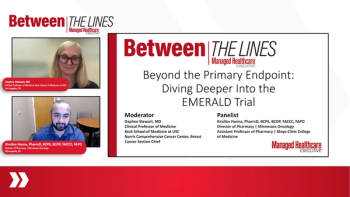
Safety and Efficacy Data Results at 24-Week Mark of TRuE-V Studies
The key safety and efficacy data of the TRuE-V studies are discussed.
Episodes in this series

Medical experts Gary Owens, M.D., and David Rosmarin, M.D., discuss the results of the initial phase of the TRuE-V studiesfor the treatment of vitiligo. They highlight the primary end point, which is the achievement of 75% or more repigmentation using the VASI [Vitiligo Area Scoring Index] score. While 30% of patients in the studies reached this end point, the ruxolitinib cream arm significantly outperformed the vehicle arm. Despite this progress, the experts emphasize that the six-month mark was chosen as the primary end point due to ethical concerns regarding prolonged patient treatment without active intervention.
Regarding side events, the overall tolerance of the medication was good, with no serious treatment-related issues. However, they note that acne at the application site affected about 6% of patients, with 5% experiencing itch at the application site. The experts acknowledge the importance of standardized scoring scales like VASI in evaluating vitiligo response and discuss the significance of carrying out the TRuE-V studies for 104 weeks to determine long-term patient benefits.
They emphasize the alignment between payers and clinicians in prioritizing patient benefit, underscoring the importance of data that extends to the two-year mark. The discussion highlights the need for extended study durations to assess treatment efficacy and patient outcomes thoroughly.
Video synopsis is AI-generated and reviewed by Managed Health Care Executive editorial staff.
Newsletter
Get the latest industry news, event updates, and more from Managed healthcare Executive.



















































